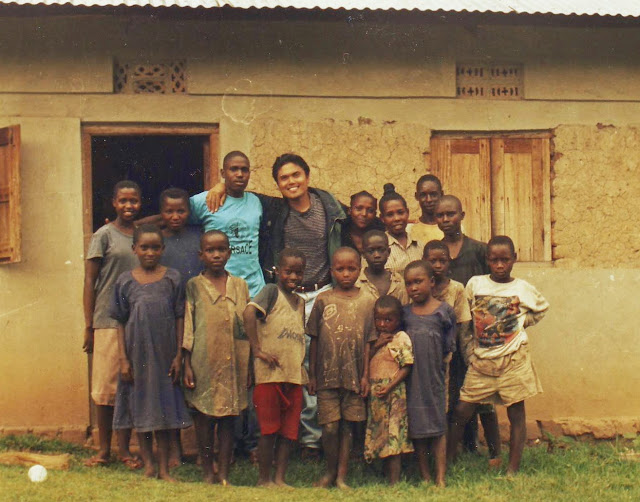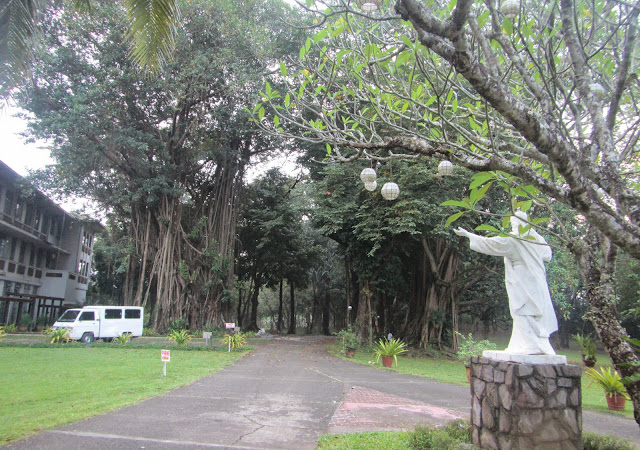| Location: Uganda, East Africa Total Land Area: 241,038 sq. km. (146,670 sq. mi.) Elevation: Average of 1,100 from sea level (3,609 ft.) Capital City: Kampala Official Languages: English and Swahili Independence from the UK: October 9, 1962 Currency: Ugandan Shilling (USh) Time Zone: EAT (UTC+3) Calling Code: +256 Descriptive Summary: Uganda is a landlocked country in East Africa. Uganda takes its name from the Buganda kingdom, which encompasses a large portion of the south of the country including the capital Kampala. Beginning in the late 1800s, the area was ruled as a colony by the British, who established administrative law across the territory. Uganda gained independence from Britain on 9 October 1962. |
|---|

My VSO volunteering work in Uganda wayback June 2002 to September 2003 will always be one of my best experiences where I lived in Africa for 14 months working as a Programme Management Advisor specializing in village banking operation managing a village bank in the name of When Rains Fail Trust (WRAF).

VSO which stands for Volunteer Service Overseas is the largest international volunteer sending organization since 1958 based in London with 76 beneficiary countries. I was recruited in the Philippines by the VSO Bahaginan Organization. I had eight batch mates when I arrived in Uganda on June 21, 2002 in the names of Jamie Alan Breadmore (Canadian), Murad Ahmed Hassen (Canadian), Isha Tan (Canadian), Dr. Kate Hulbert (British), Dr. John Ellis (Irish), Ali Alidina (Canadian), Stefan Vincent Quinton Kloop (Canadian) and Dr. Alastair James Watt (British). We were then 74 foreign volunteers of different nationalities working in Uganda by that time. Our batch then was welcomed with a Barbecue Night hosted by VSO Ugand Office.

Aside from my main job as a programme management village consultant, I had always attended to VSO monthly development education visits to other parts of the country to monitor the sustainability of the beneficiaries of the community and conservation development programme implemented in every locality.

Ugandans are very hospitable people. They gave high respect to the “Muzungus” like me. Muzungu is a term for non-black foreign volunteers working in Uganda. What I like most in Uganda is the cold climate being a land of high elevation with a weather pattern uniquely cold contributed by Lake Victoria, one of the biggest lakes in the world.

In Uganda, the sun usually sets at almost 7:00 P.M. and so evening walks are still provided with broad day light. The village where I live is so green and vegetables and fruits are very cheap such as: avocado, papaya, pineapple, water melon, jackfruit, banana, Irish potatoes (patatas in the Philippines), sweet potatoes (camote in the Philippines), eggplant and cabbages. Their jackfruit are huge and they have the best avocado in the world. I can still remember that few of my clients would normally give me a sack or two of avocado and huge jackfruit when they apply for a loan from our bank where they use the proceeds to buy tea leaves from tea farmers.

By the time, I was in Uganda their currency exchange rate to one (1) US Dollar was 2,200 Ugandan Shillings (USh). An ordinary Ugandan citizen should have at least USh100,000 for their monthly income to survive. A kilo of a beef’s meat costs USh4,000; Pork at USh5,000 and Chicken at USh8,000. In the villages, there is no water supply coming from commercialized water suppliers and so one has the option to buy it from the enterprising kids who get the water from a hill’s base coming from a spring source about 4 kilometers away for each one jerrican (water can) at USh800.

My work placement was based in Nyakashaka Village, Burere sub-county, Buhweju county, Bushenyi District, Uganda, East Africa. It is 7 hours bus travel from the capital city of Kampala along national tarred road and another two (2) hours taxi travel from the national road to Nyakashaka trailing a very dusty road. Dry red loose soil are blown up into the air whenever vehicles and tea trucks pass resulting for fine dust to penetrate inside leaving all the passengers red-dust covered. Taxis in Ugandan village parlance, are old five-passenger cars but which is being jam-packed with at least twelve passengers along with their cargoes with a fare of USh8,000.

I was directly reporting to my programme officer in the name of David Gamey and my Ugandan counterpart was Mr. Winnington Kano Naijuka Kekurutso (in red polo shirt in the picture). The only lady in the picture is Miss Barbara Kasange Murungi, the branch manager of the Nyakashaka branch since we had operated three branches then.

The objective of VSO is to help any beneficiary community to train my counterpart and his whole team and transfer any form of knowledge and technology for sustainability. Thus, I was faced with the gargantuan task of training the village bank team in the aspects of savings generation, accounting, auditing, loans operations, personnel management, policy formulation, staff and members training and marketing. I also conducted bookkeeping training to member entrepreneurs whom we extended revolving credit fund (RCF) as “hotel” operators in the nearby villages. Hotels there are just small stores offering tea and matoke (boiled mashed banana as staple food).

Life in my placement has so much community exposure as we travel from one village to another to have the sensitization activities of the bank. The locals are very happy when you greet them in their Runyankore language with: “Agandi, banyabo na basebo” which means in English as “A pleasant day to you, ladies and gentlemen.” Or “Nashemererwa, munonga mononga!” which means that “I am very much pleased to be with you all!”

Not all roads leading to the isolated villages are passable by car. The only option to travel is to use a Yamaha 125 Single Motor Vehicle.

After five months of stay in my Ugandan placement, I realized I had so much spare time. That was the time I started to volunteer teaching English and Mathematics subject during weekends in nearby villages of Rwibaare, Kakindo and Ryamasa. Teaching was not a part of my placement pack (job description). In return, my students would usually guide me to scale the nearby mountains like the Mount Kyangenyi. Lawrence Sajja (in blue shirt in the picture) is my permanent guide.

While I enjoyed so much my volunteering work in Uganda, I also enjoyed so much the mountain climbing and photography in my placement base. I was lucky to have such a picturesque place with a cold climate. In most cases, thick fogs can be experienced and there is zero visibility. My place is even colder compared to Sagada in the Mountain Province of the Philippines which is considered the coldest in the country.

Mount Nyakarangara is the nearest mountain to my work placement. This is the usual place where I take my visitors for a climb like the couple Grant Gilbertson (British) and Dr. Patricia Tivadar (Romanian) and Behram Darruwala (Indian).

Aside from my usual travels to the nearby villages, I also had major travels and one of the most memorable was when I visited the wilderness of the Queen Elizabeth National Park which is five hours drive away from my placement post.

Queen Elizabeth National Park is a natural savanna game reserve where lions, elephants, baboons, hippos, Ugandan kobs, water bucks, antelopes, buffalos, bush pigs, colobus monkeys, Egyptian goose, black-headed gonolek birds, serval cats and many others are just a common sight.

On our way to the Queen Elizabeth National Park, we happened to pass through the equator marker located in Kasese District. The whole national park is in Kasese District.

I also travelled to the Bujagali Falls which is a part of the Source of the Nile River located in the town of Jinja. In the same event, I had a cruise to the Source of the Nile going to Lake Victoria and passed through an island marker where Nile River and Lake Victoria meet. In a separate occasion, I had the opportunity to have a day-long white water rafting along the Nile River and eve prior to the rafting was a Barbecue night of all the guests.

Lake Bunyonyi is the deepest lake in Uganda which has 39 islands of which Bushara Island at area of 16 hectares is the most well developed equipped with modern facilities and lots of amenities to enjoy.
Indeed, it is worth to be A VOLUNTEER! With this, I encourage each and everyone of you to do your part in SHARING SKILLS, CHANGING LIVES of others, that is VSO’s motto.










































